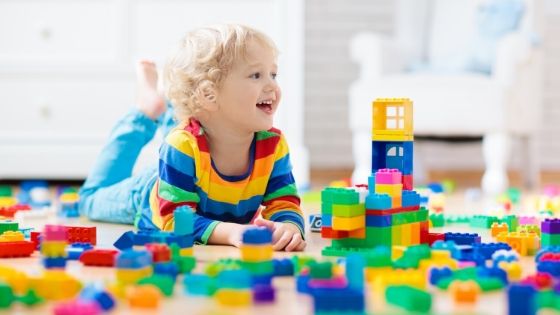
There’s something beautiful about watching kids play, laugh, and enjoy each other’s company. Whether they’re exploring at recess or playing on the neighborhood playground, this time of play is one of the most influential aspects of their development. Play is one of the best ways to learn anything, and with the help of recess and playgrounds, children gain an understanding of important social and developmental skills. Today, we’ll discuss social play in particular—take a look at our guide to the different stages of play to understand how this play develops social skills as the children grow!
Unoccupied Play
This stage of play begins at birth. The random, jerky movements of infants are their version of play. These movements help them gather awareness of their bodies, helping them understand how the different areas of their bodies move and do what they want. As the most basic type of play, unoccupied play allows complete freedom for a child to think, move, and imagine—it requires very little from you.
Recommended Toys: Child-friendly household objects
Independent Play
Also called solitary play, this is when your child plays alone, hardly paying attention to what other kids or adults are up to. Now you may think that this stage is simply when children play quietly in the corner, but it’s as active or quiet as your child’s temperament. However, encouraging this ability for your child to enjoy playing him or herself will help them discover solo comfortability.
Recommended Toys: Play kitchens, toddler-friendly playsets for imaginative play
Onlooker Play
This next stage can be as short or as long as your child needs to get comfortable. In the simplest sense, onlooker play is when a child begins to watch other children (and even adults) play but does not play along with them. It’s truly all about observation as they try to figure out if they will be comfortable enough to join in.
Recommended Activities: Head to the local park and let them watch kids play in the sandbox or let the child watch what you like to do (gardening, puzzles, etc.)
Parallel Play
This is the stage that gets your child even closer to socializing with other children. The parallel idea of this stage comes from the idea that your child plays beside rather than with other children. If you want to get them closer to connecting with others, then be sure to provide them with the opportunity to do so.
Recommended Toys: Toys that they can easily share, tunnels, and low climbers
Associative Play
The fifth stage of play is when children finally begin to interact with one another during play, but not a large amount of it. This tends to be where playgrounds really come into play, as you’ll find a myriad of kids playing all around, but not necessarily playing with one another.
Recommended Toys: Art supplies, playgrounds in general
Cooperative Play
The final stage is that of cooperative play. As the final developmental stage, this is the sort of play that transcends childhood and plays an important role in a myriad of activities such as playing a sport, putting on a play, or working on a group project. When you’re watching kids at recess, this will be the sort of play where you’ll typically see a “leader” assigning roles to other children. It’s quite the sight to see!
Recommended Activities: Swing and slide playgrounds, Gaga ball pits, and more!
If you want to enhance and encourage the different stages of play in your child, turn to Discount Playground Supply. Whether you’re an educator or parent hoping to update your play space by adding Gaga Ball Pits, ADA swing sets, or sandboxes, we’ve got what you need. Take a look at our varied inventory now and watch your kid’s play comfortability flourish!

